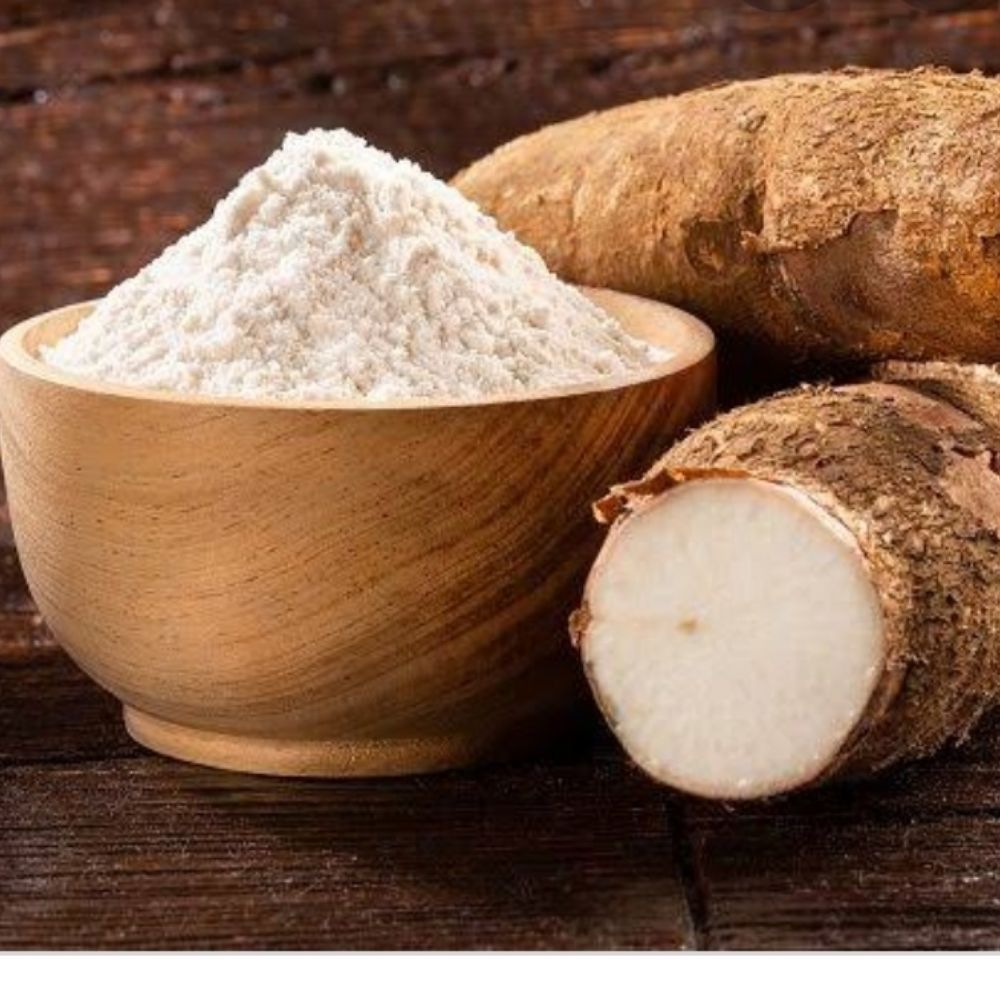Native Tapioca Starch

Tapioca Starch - Cassava
Tapioca starch is a gluten-free flour that comes from the Tapioca/cassava plant.
Tapioca is a long, thick root with a brown, papery, bark-like skin. Certain specimens can be several feet long! Like many root vegetables, tapioca is starchy. In fact, it’s very starchy – starchier than potatoes, even. As such, it’s an ideal vegetable from which to obtain pure starch.

Tapioca Starch
Specifications – (Food)
Starch: 85% min
Moisture content: 13.0% max
Fiber content: 0.20% max
Ash content: 0.20% max
Whiteness: 92% min
Acidity: 1.5 max
PH: 5 – 7
Viscosity: 700 BU
Specifications – (lndustrial)
Starch: 82% min
Moisture content: 14.0% max
Fiber content: 0.30% max
Ash content: 0.50% max
Whiteness: 89% min
Acidity: 1.5 max
PH: 5 – 7
Viscosity: 700 BU

Tapioca Starch Residue
Tapioca Starch Residue is high in starch, energy, low fat, low NDF (Neutral Detergent Fiber). A very good supplementary feeds for Dairy cow, Pig, Poultry.
Tapioca Starch Residue is the left over material or by-product produced when extracting tapioca starch from raw tapioca.
Specification:
Starch content : 50%
Moisture : 14% max
Fiber : 8 – 15% max
Protein : 2.9%
Foreign matter : 3% max
Packing : 25kg or 50kg in PP bag, PE bag or in jumbo bag
Loading Quantity: 26MT/ Cont 40ft
Tapioca Starch processing

Raw material cleaning department.
This section includes cleaning and washing procedures. First, the raw cassava tubers are sent into a dry sieve to remove impurities attached to the root surface, such as sand, stones, weeds, etc. Then, transport the cassava to a paddle washing machine for a thorough deep cleaning. The combination of dry cleaning and wet cleaning can achieve a higher cleaning effect, while basically removing the external gray cassava peel.
Material processing department.
This section includes cutting, fine crushing and desanding procedures. This is a key process to ensure the quality of the finished product. First cut the cassava into small pieces, then use a grinder to crush into cassava mash. Wood shredder is a device that cuts cassava into fine particles and ensures high fineness. After that, the sand remover will be used to remove the fine sand mixed in the cassava mash, and then enter the dehydration process.
Drying part.
This section includes dewatering, drying and screening procedures. After the cassava s is obtained from the above process part, it is pumped into a filter press to squeeze out the moisture, and a wet cassava cake with a moisture content of 38%-40% is obtained. Then the wet cassava cake is crushed, and then sent to a rapid dryer to meet the drying requirement of 10-12% moisture content.
Finally, in order to ensure high quality, we will use a shaker to separate the Tapioca Starch ensuring all sizes are up to standard
Why We Love Anax-Green
(Tapioca Starch)
Fuel by passion to ensure best quality and consistency from a single source, we works closely with the farmers to dedicate good quality Tapioca Starch out from the farm to our processing plant.
We have a committed professional team, catering and serving all our partners requirements. We ensure all of our products are at it best. We are an environmental conscious team who strongly believing in sustainable farming and social responsible towards all our stakeholders .
Our sustainable agriculture products are Pepper , Passion fruit, Tapioca Starch, Laminated Veneer Lumber (LVL), Coffee, Gurjan Verneer and still growing with our farmers